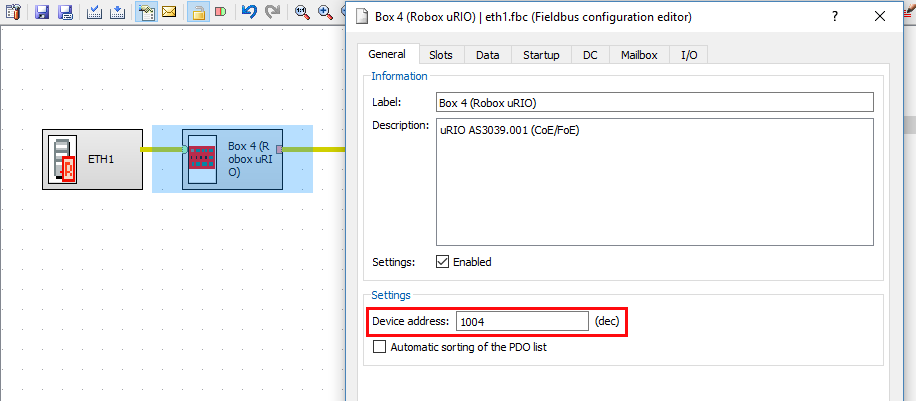Directive (device command) to perform writing of the internal registers of an ethercat device using an absolute address.
Syntax |
ECAT_FPWR nEt adp ado v1 [, v2, ... , vn ] [-TO microSec] [-BF] [-X8 | -X16 | -X32 ] |
|---|---|
nEt |
Number of the Ethernet ports whose information is wanted |
adp |
Physical address associated with the node (see "physical address" below) |
ado |
Address of the register in which to write to the device |
v1 |
Values to write to. Control over the value entered depends on the type of data selected |
v2, ... , vn |
Additional values to be written. (optional) |
-TO microsec |
Timeout waiting for response - in case of omission the value 500000 is assumed. (optional) |
-BF |
Forces the use of the data support buffer. (optional) |
-X8 |
Data taken as bytes (allowed values -128 to 255). (optional) |
-X16 |
Data taken as words (allowed values -32768 to 65535). X16is the default size. (optional) |
-X32 |
Data taken as dword (allowed values -2147483648 to 4294967295). (optional) |
Notes |
Physical Address
There are two ways to figure out the physical address associated with the node:
From the RFBCED editor, by pressing twice on the indicated device, under "General" (see EtherCAT communication for more details).

From the shell, through the command "fview /proc/bus/ecat/ethX/master/info" the addresses of all devices in the ECAT line are present (see EtherCAT diagnostics for more details).

Example
Writing value 0x4 from ETH port 1, device physical address 1002, register address 0x0120
|
